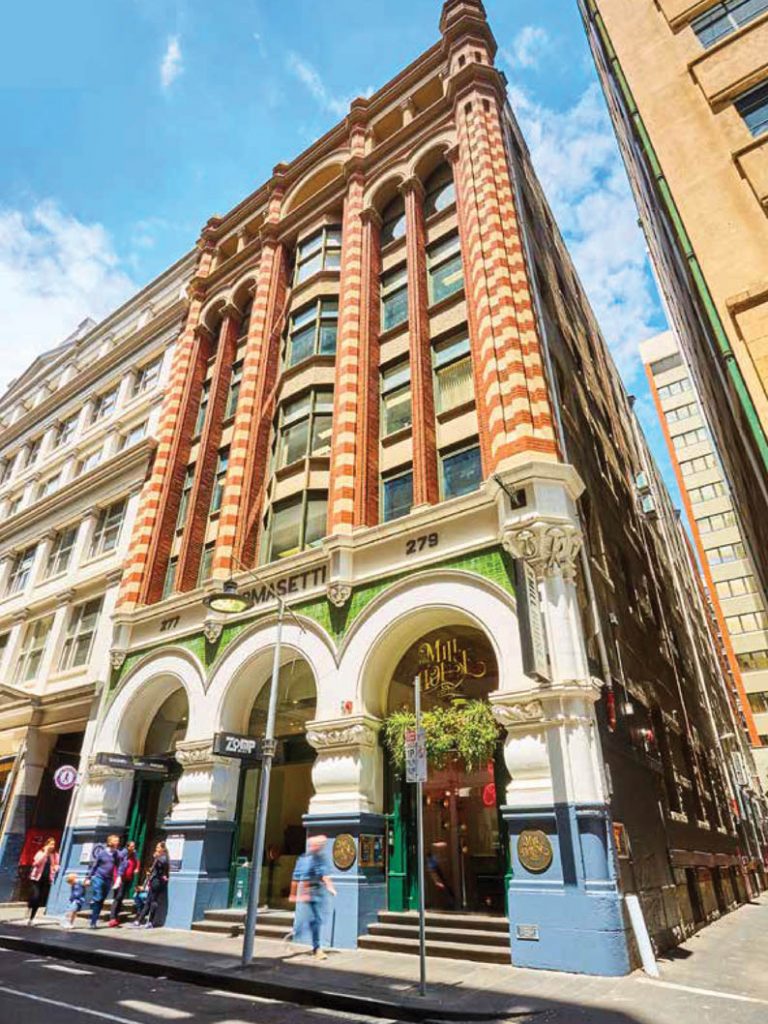Merivale’s move into Melbourne is under fire, with reports the extensive plan for Tomasetti House is struggling to meet its anticipated opening for this year as the bar-tzar feels the operational pinch.
Early 2021 Justin Hemmes’ group shelled out around $40 million to the Sydney-based Millett family for the prized establishment on Flinders Lane.
Tomasetti House is a seven-storey brick and bluestone building with a half basement and laneways on each side, in the beating heart of the city’s CBD.
Merivale operates more than 80 venues and brands across Sydney. This was its first outside of NSW, and only the second outside of Sydney.
“Melbourne is a very special city, with a unique energy and an inimitable soul,” Hemmes said after the purchase.
“Its local hospitality industry is one of the best in the world; brimming with creative culinary talent and supported by a passionate community of diners.”
Having spent 170 years in assorted iterations, the property was expected to require millions in remedial works to bring it to modern safety code.
Hemmes said it would include a swanky Chinese restaurant, headed by chef Jowett Yu, slated to open in 2023.
In May 2021, only months after the CBD acquisition, Hemmes flashed the cash again to take the Lorne Hotel, and in August last year he furthered the consolidation by buying the freehold of Argentinian restaurant San Telmo, in upmarket Meyers Place. The restaurant remains a tenant at this point.
The group took over at the Lorne, and installed an outlet of Totti’s restaurant, launched in the Royal Hotel in Bondi and since relayed into other sites. Works at the Lorne were by Chroma Group, which specialises in expensive hospitality fit-outs.
The City of Melbourne granted planning permission for work on Tomasetti House to begin last September, also by Chroma Group, and the opening was pushed back to sometime in 2024.
This week News Corp pronounced the project has hit a “$100 million brick wall” – a number that includes an estimated $40 million or more for the restaurant renovation, which is more than the purchase price.
It was reported no work was going on at the site this week, and hasn’t since late 2023.
Total spend on the brownfield does put a lot of pressure on it to be more than just a restaurant, and it will likely see Merivale-style additions on multiple levels, and possibly other uses on the upper floors.
The business of f&b has seen the full effects of the rising cost of living, with Hemmes Trading P/L reportedly flat last year, amid turnover of $580 million.
The $1.5 billion Ivy redevelopment plans are currently on hold, awaiting planning authorities. The Australian mis-quoted Hemmes on the the project, citing him saying “not at this stage” as reference to whether or not it was going ahead.
However, chef Yu revealed on socials this week that he was “still working” on the Tomasetti project.
Hemmes declined to comment on the Melbourne endeavour.
Built in 1853 for William Degraves’ flour-milling and merchant businesses, the building is a bluestone warehouse that has been extended and refaced. It is deemed significant both architecturally, as one of the most distinctive of the Ewardian era in the city, and historically, as the remnants of one of the largest commercial buildings in Melbourne, during its early history.
Originally five storeys, it was one of the largest buildings at the time in Melbourne’s commercial area. For two decades it was the base of the business for Degraves, a successful business man who went on to enter Parliament in the 1860s. He later had a nearby street named in his honour.
The warehouse was renamed the Oriental Building in 1899, and during the following decade another two floors were added and a new façade was applied. In following years it became known as the Tomasetti Building.







